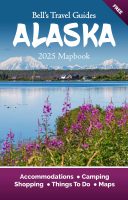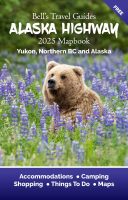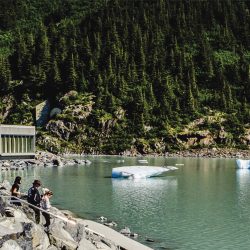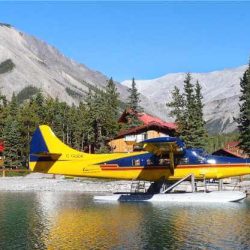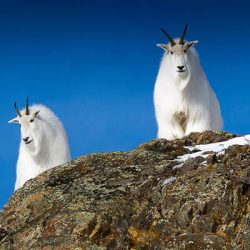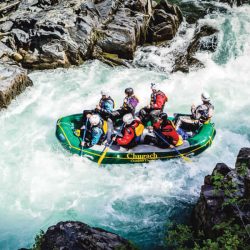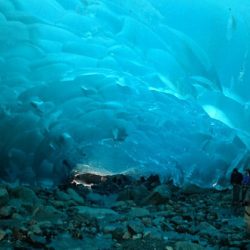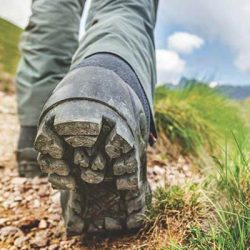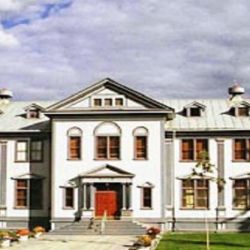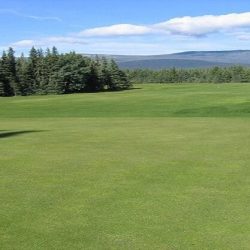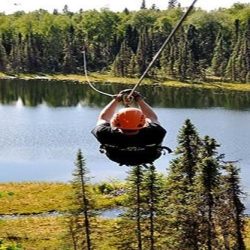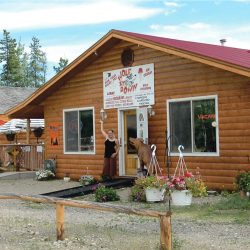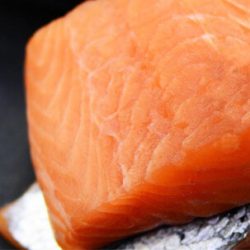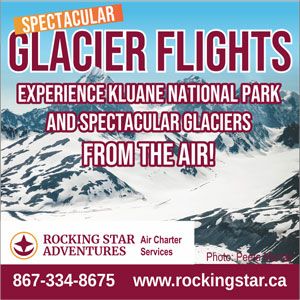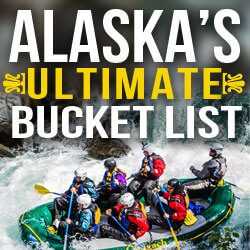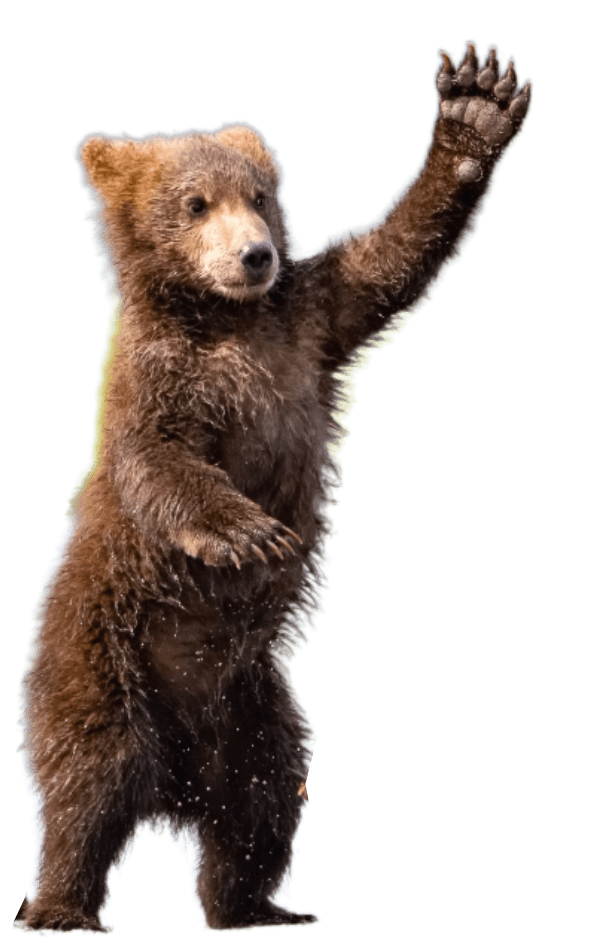One of the most common questions first time visitors to Alaska want to know is when is the best time to visit the state. The simple answer is to visit Alaska between May and September and you will get the best weather. Peak travel time is between mid-June and mid-August. But the best time to visit Alaska depends on what you plan to do? Most of Alaska’s visitors travel by cruise, or drive, making the warmer summer months ideal. However, if you’re looking for winter activities or Northern Lights viewing, winter is the best time for your visit to Alaska.
Is the Summer the best time to visit Alaska?
Alaska’s Summer weather is…variable. However, it’s often much warmer than visitors are expecting. This may be the land of the arctic, but summer temps tend to be between 50 – 80 degrees Fahrenheit (10 -25 degrees Celsius), and it’s not unheard of for the Fairbanks area to break into the 90’s during the summer months. The weather also tends to vary depending on your location. Coastal regions and the Inside Passage in Southeast Alaska get a lot more precipitation than Denali National Park and Fairbanks in the Interior of the state.
However, just because you’re likely to get the best weather during the summer, doesn’t mean it’s the only time to visit this great state. Visiting in April or September will see cooler temps but less crowds. Fall also has the benefit of having fewer mosquitoes in Alaska, but that’s not as big a problem as some people will have you believe.
Most tourist related businesses don’t open until early to mid-May so you may find April is too early if you want to see and do a lot of activities. There also tends to still be snow on the ground and in the mountains in April. However, I find this early time of year to be one of the most beautiful times to visit Alaska. The snow-capped mountains and the sunny spring days make for some spectacular scenery.
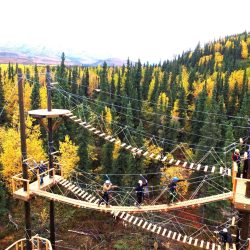
Discover an Amazing Alaska Itinerary
From 4 nights to 14 nights you’ll find an Incredible Alaska Itinerary!
Daylight in Alaska – How long does the sun stay up?
Alaska is the northernmost state and therefore, has very long days during the summer. Above the Arctic circle (which is 190 miles north of Fairbanks), the sun doesn’t set during the summer, so you will have 24 hours of daylight to explore. Fairbanks, at the Summer Solstice (June 21) will get approximately 22 hours of daylight, while Anchorage will “only” get around 19 hours.
All this daylight during the summer, makes up for the long dark winters where 4 hours of daylight is the norm through much of December and January. These long daylight hours allow visitors to maximize what can be accomplished on a trip to Alaska. When it’s as bright at 10pm as it is at 3pm, you’ll be looking for a new adventure to add to your itinerary!
Here are some of the most popular Alaska summer activities and when they are best enjoyed.
What’s the best time for Bear Viewing in Alaska?
The bears in Alaska come out of hibernation in spring. It is very common to see bears on the side of the road in spring time as they search for food after their long winter nap.
If you are hoping to see brown bears and grizzly bears fishing in the rivers your best months to come are after the start of summer in June, July or August. There is fly-in bear viewing out of Homer on the Kenai Peninsula that operates during the peak summer months. Bears sightings can be guaranteed at wildlife preserves like the Alaska Wildlife Conservation Center or the Yukon Wildlife Preserve.
When is the best time to Visit Alaska’s National Parks?
Alaska has some of the best national parks in North America. First, there a wide variety of national parks in Alaska. Some are coastal, some are deep in the Interior of Alaska while others are covered in enormous glaciers.
There are 17 national parks in Alaska and 16 national wildlife refuges. The most famous of Alaska’s national parks include:
- Denali National Park – Home to Denali, the tallest mountain in North America.
- Kenai Fjords National Park – Spectacular marine wildlife and scenery.
- Glacier Bay National Park – Over 1000 glaciers in this national park.
- Wrangell St-Elias National Park – The largest national park in the USA.
- Lake Clark National Park – True wilderness close to Anchorage.
- Katmai National Park – Bear viewing at Brooks Falls.
Alaska’s national parks are best accessed during the peak summer season if you are hoping to enjoy incredible wildlife viewing. Katmai and Lake Clark National Parks are the best place for bear viewing. This is because they have rivers and waterfalls that attract bears looking for a meal. Unfortunately, it’s not possible to drive to either of these two national parks. It is only possible to fly in from Anchorage or Homer. There are day tours from both cities to see the bears in Katmai or Lake Clark National Parks. Tours run from May through September, but July is usually the best month for bear viewing.
Denali National Park and Wrangell St-Elias National Park are only open from mid May to early September, so plan accordingly. Kenai Fjords National Park and Glacier Bay National Park are essentially always “open” as they are mainly accessed from a boat. However, they are most commonly visited during the summer cruise ship/tour boat season.
Is Winter the best time to visit Alaska?
If you like winter sports such as skiing or snowmobiling, visiting Alaska in the winter is the way to go. Alaska is renowned for having some of the best Heli-Skiing in the world near Valdez and Haines. But Alyeska Resort in Girdwood (40 minutes south of Anchorage) has excellent skiing with a Tram, 6 lifts, 73 runs and hundreds of inches of annual snowfall. Many areas of Alaska use a snowmobile as a primary mode of transport in the winter. With so many trails and terrain, snowmobiling is a major winter pastime for many Alaskans.
Another big draw for Alaska Visitors is to see the Northern Lights. Because there is daylight for up to 22 hours during the summer, this is not the ideal time to see the Northern Lights. From September to April, it is possible to catch glimpses of the Aurora Borealis, but you will want to be as far north as possible (Fairbanks or further north to the Arctic Circle), and hope for a clear night. Ideal viewing months are December to March, but as with all things relying on Mother Nature, it’s never a given. Northern Alaska Tour Company specializes in trips to the Arctic and Northern Lights Viewing.
Finally, visiting Alaska in the winter will give you the chance to try one of Alaska’s best loved sports: Dog sledding! The famous Iditarod dog sled race takes place every March in Alaska. And there are kennels from all over the state and the world that compete. Visiting Alaska in Winter will give you the opportunity to give dog sledding a try. It is possible to try it in the summer as well, but most of the summer dog sled experiences are in a wheeled “cart” of some description, not a sled, that runs on the snow.
When is Alaska’s Shoulder Season?
The Shoulder Season in Alaska is May and September. This is when the weather is cooler but there are less visitors, so there is a chance you can score some good deals on hotels and car rentals. Late May is a good time to visit Alaska if you prefer fewer crowds and fewer mosquitoes!
When is the Alaska Cruise Season?
Alaska Cruise ships typically run from Early May to September when the average temperatures in Alaska are at their highest. However, every year, the season seems to start earlier and go even longer. There are now cruises available in late April and even early October. These shoulder season cruises should see lower prices because they are not taking place during the peak season. For unique itineraries check out Alaska’s luxurious small cruise lines.
When is the best time for Whale Watching in Alaska?
There are Whales in Alaska as early as April, however May through September is the best time for whale watching in Alaska. Alaska has a number of different whale species that migrate through its water including Gray Whales, Humpback Whales, Orca’s (Killer Whales) as well as Blue Whales.
Many cruise passengers will get the amazing experience of passing by pods of whales on the journey through the Inside Passage. But to (almost) guarantee whale sightings, it is recommended to take a whale watching tour out of Juneau or Ketchikan or Seward. The smaller whale watching tour boats also allow guests to get closer to these majestic animals.
The best time of the year to see Gray whales is March, April and early May as they pass through the Inside Passage towards the Bering Sea. Ketchikan, Sitka, Seward and Kodiak offer an excellent opportunity to spot Gray Whales in the early spring.
Beluga Whales can often be seen in the waters of Cook Inlet and Turnagain Arm, near Anchorage, from spring through fall.
June and July are some of the best months to see Humpback Whales in Alaska, but they can be see from May to September. Over 500 Humpback Whales call Southeast Alaska’s Inside Passage home each summer.
It is also possible to see Blue Whales in Alaska. Cruises through the Gulf of Alaska in July and August have the best chance of seeing these enormous animals. They are rarely spotted close to shore.
One of the most common whales seen in Alaska is the Killer Whale (Orca). Pods of Orca’s can been seen from year round in Alaska. Seward is a great place to take a whale watching tour and spot Killer Whales.
Other marine mammals that can be seen in Alaska’s waters include Minke whales, dolphins, Dall’s Porpoises and Harbor Porpoises.
When to visit Alaska?
As a very biased lover of Alaska, I recommend going to Alaska when you can make it happen. There is no bad time to visit this amazing state. However, it’s clear that the warmer temperatures and long days make summer the best time to visit Alaska for most people.
